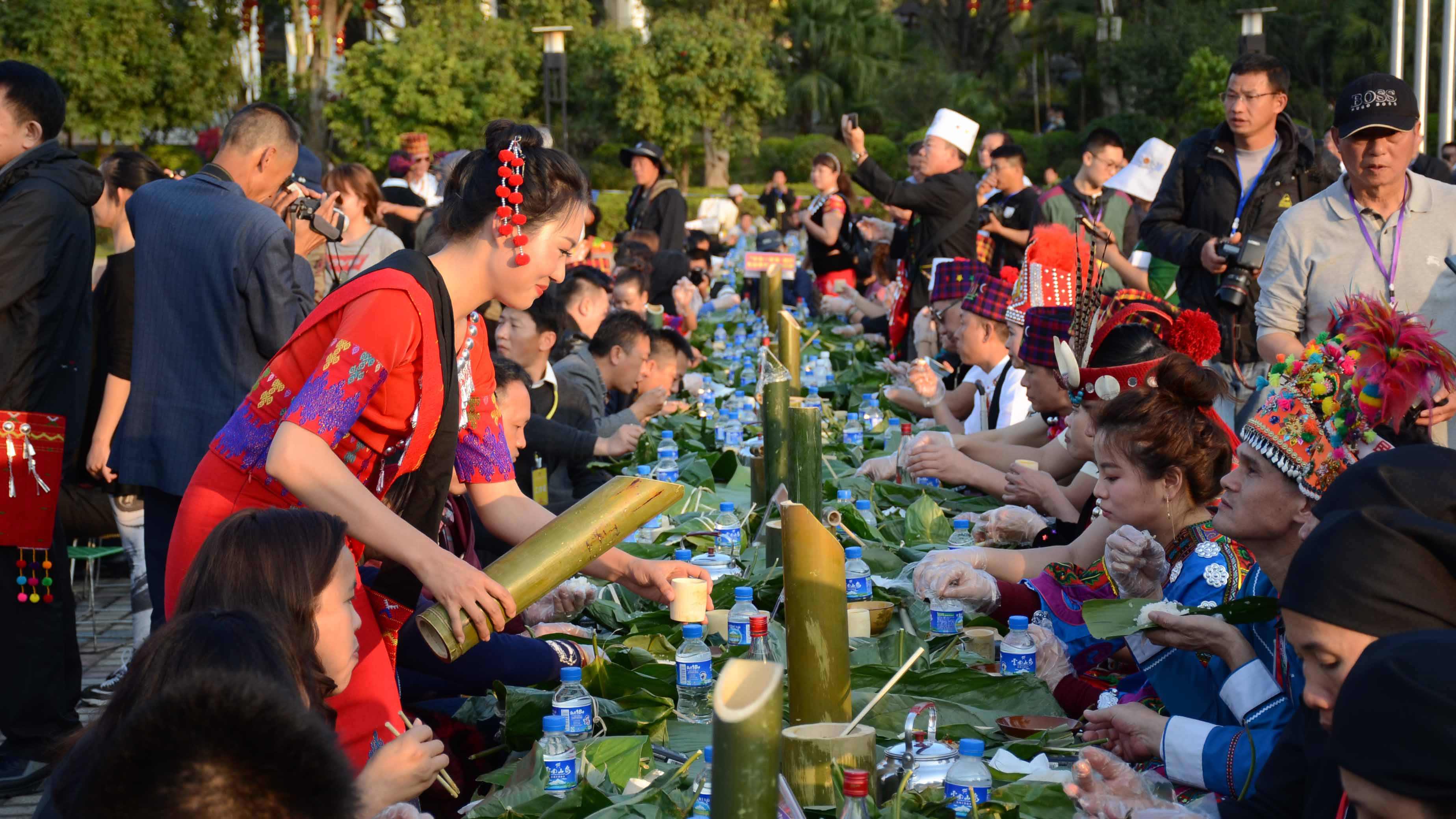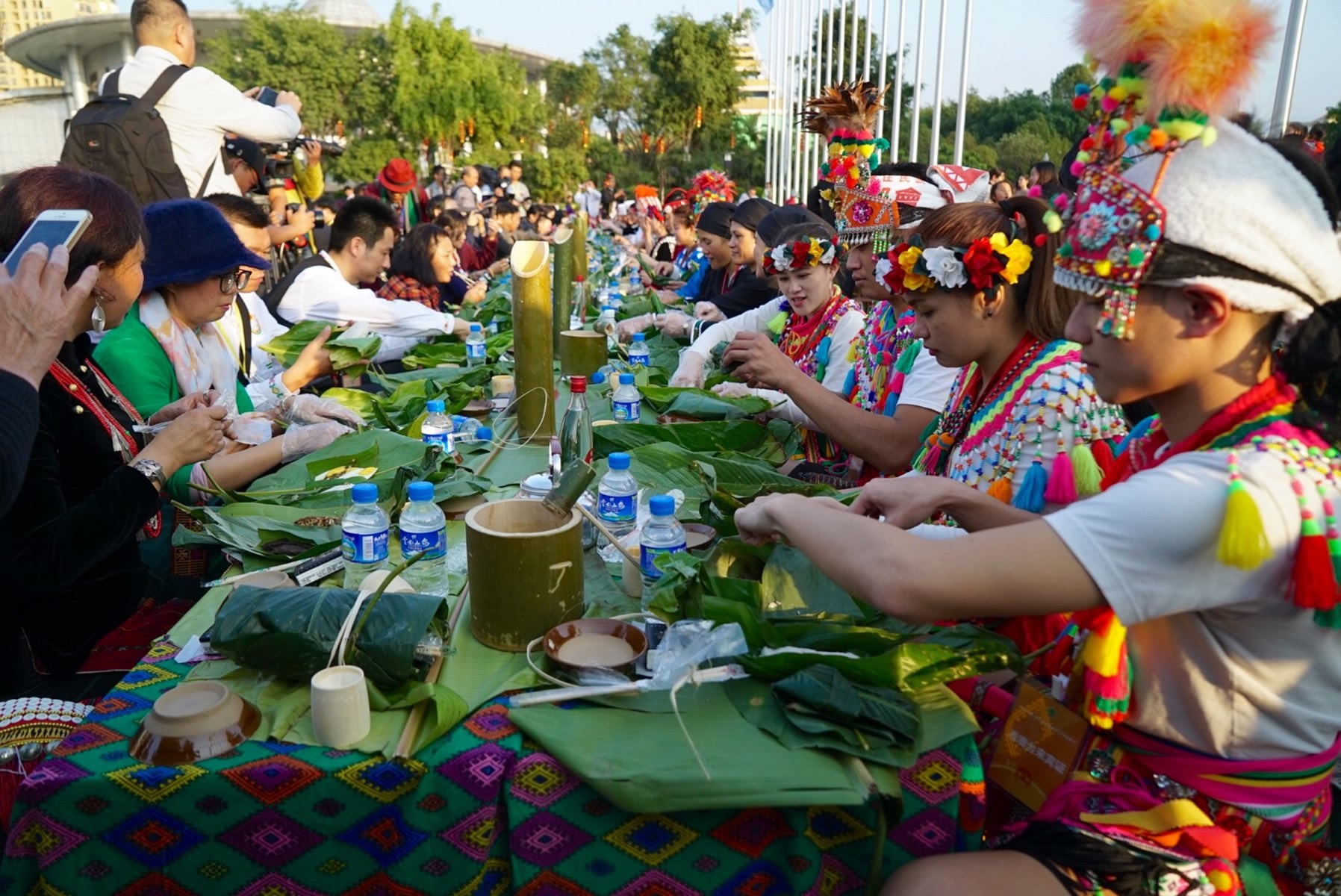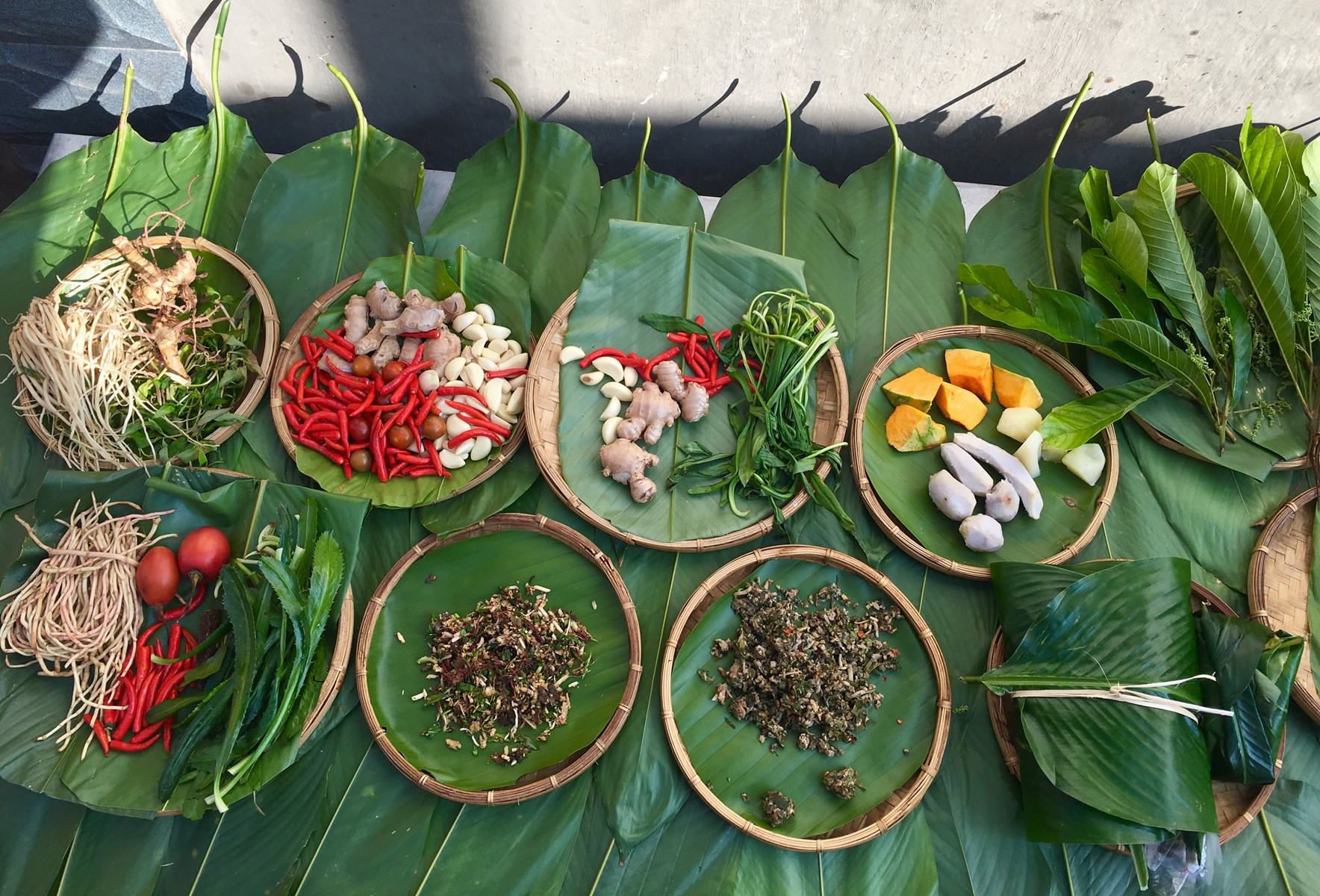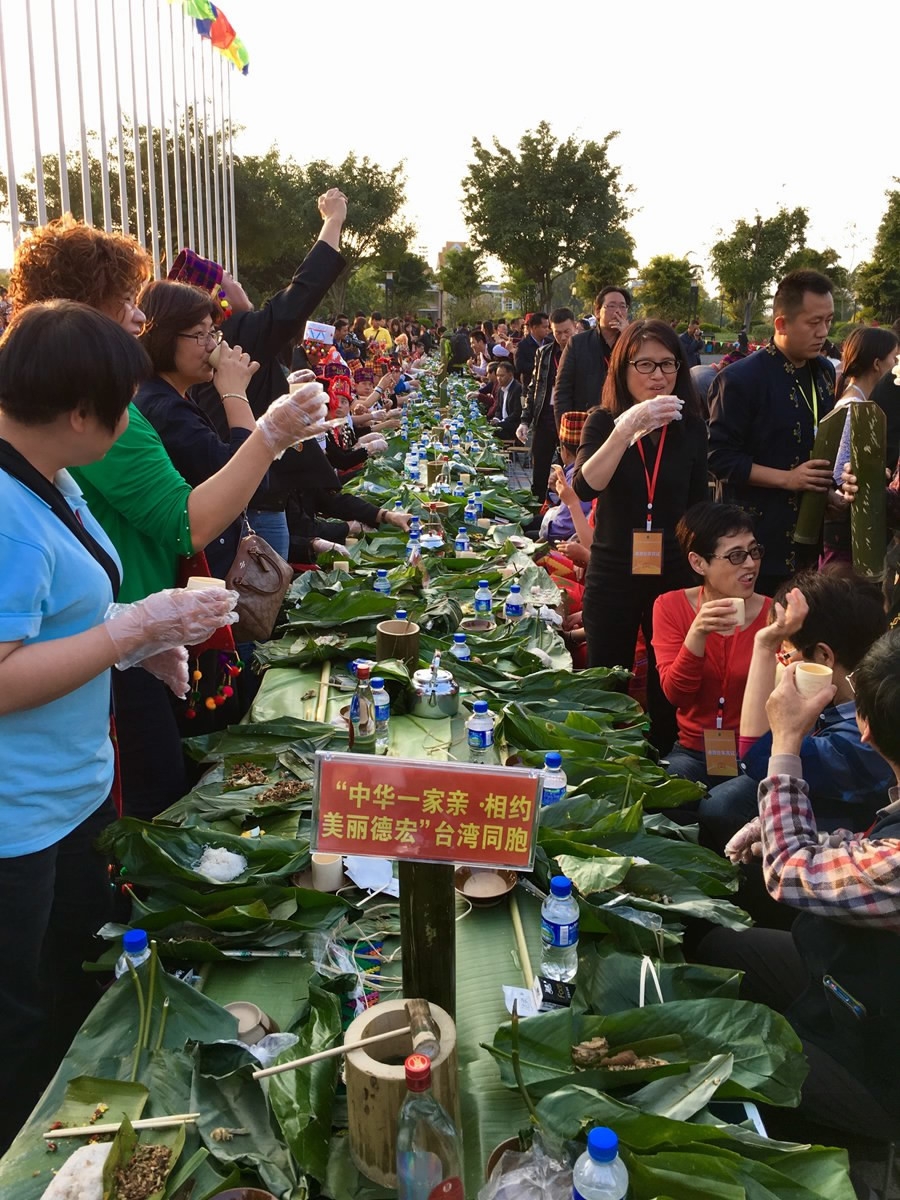
Culture
11:21, 02-Mar-2018
China's Jingpo people celebrate grand festival with 'green feast'
By Yang Jinghao, Luo Caiwen

Any restaurants claim today to be "green" to attract customers. But one may have a brand-new understanding of so-called “green food” if they get an opportunity to experience the “green-leaf banquet” of the Jingpo people, an ethnic minority who mainly reside in southwest China's Yunnan Province.

People of Jingpo ethnic minority and guests from different places share the grand “green-leaf banquet” in Dehong, Yunnan Province, the major habitat of Jingpo people. /Courtesy of Zhang Yongqiang
People of Jingpo ethnic minority and guests from different places share the grand “green-leaf banquet” in Dehong, Yunnan Province, the major habitat of Jingpo people. /Courtesy of Zhang Yongqiang
On Thursday, more than 4,000 people gathered in Dehong Dai and Jingpo Autonomous Prefecture to share such a grand feast to celebrate the upcoming Munao Zongge Festival – the grandest music pageant of Jingpo people, which falls on the 15th day of the first lunar month.
Almost everything is green. The tables are covered with big banana leaves. There are no plates or bowls; instead all the delicacies are wrapped in different kinds of leaves – and then they are all wrapped in a huge leaf. Also, usual tableware as chopsticks, spoons or forks is completely absent – people wear disposable gloves and eat with their hand. Traditionally, wine is served in cups made of bamboo.

A Jingpo woman prepares for the banquet. She uses leaves to wrap the cooked rice. / CGTN Photo
A Jingpo woman prepares for the banquet. She uses leaves to wrap the cooked rice. / CGTN Photo
How about the food itself?
It’s no exaggeration to say that almost everything served on the banquet is ecological. Most of the materials and ingredients come from the wild and are cooked in a natural way.
The flavors, of course, are special.

Some ingredients of the Jingpo cuisines are shown. Most of them are fetched from the wild. / CGTN Photo
Some ingredients of the Jingpo cuisines are shown. Most of them are fetched from the wild. / CGTN Photo
One of the distinctive dishes is called Chongcai, or “mashed food.” Jingpo people usually put some potherbs, dried meat and a plenty of wild spices together into a bamboo tube and pound them with a wooden pestle. This salad-like cuisine is said to be healthy in different ways because of the different potherbs involved. This is a typical example of how Jingpo people cook.
Xu Liehong, a local Jingpo man, told CGTN that having this kind of green-leaf meal is an old tradition. “These foods can be easily cooked and are convenient for people to bring along when they go out for farm work or hunting. Besides, the leaves are eco-friendly.”

People from Taiwan enjoy the Jingpo cuisines during the special “green-leaf banquet”. / CGTN Photo
People from Taiwan enjoy the Jingpo cuisines during the special “green-leaf banquet”. / CGTN Photo
Nowadays, big “green-leaf banquets” are held during important occasions such as the annual Munao Zongge Festival. This year, guests from Taiwan are invited to the event. Dehong prefecture shares a long border with Myanmar, where the Jingpo are called Kachin, and a lot from the neighboring country are also present. They are all amazed by this special feast.
Munao Zongge means “dance in mass.” On Friday, more than 10,000 people are expected to dance together in a large square. Besides Jingpo, people from other ethnic groups in Dehong, including Dai, Lisu, Deang, Achang, will also participate.

SITEMAP
Copyright © 2018 CGTN. Beijing ICP prepared NO.16065310-3
Copyright © 2018 CGTN. Beijing ICP prepared NO.16065310-3